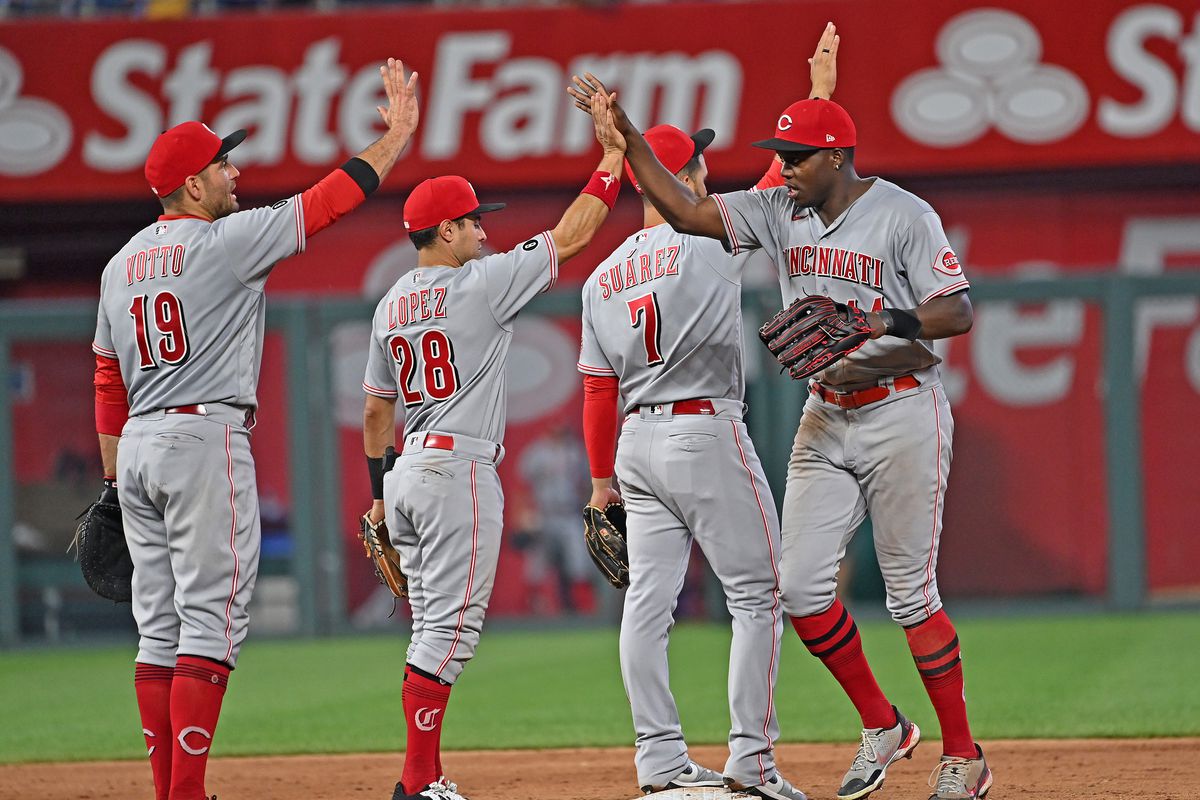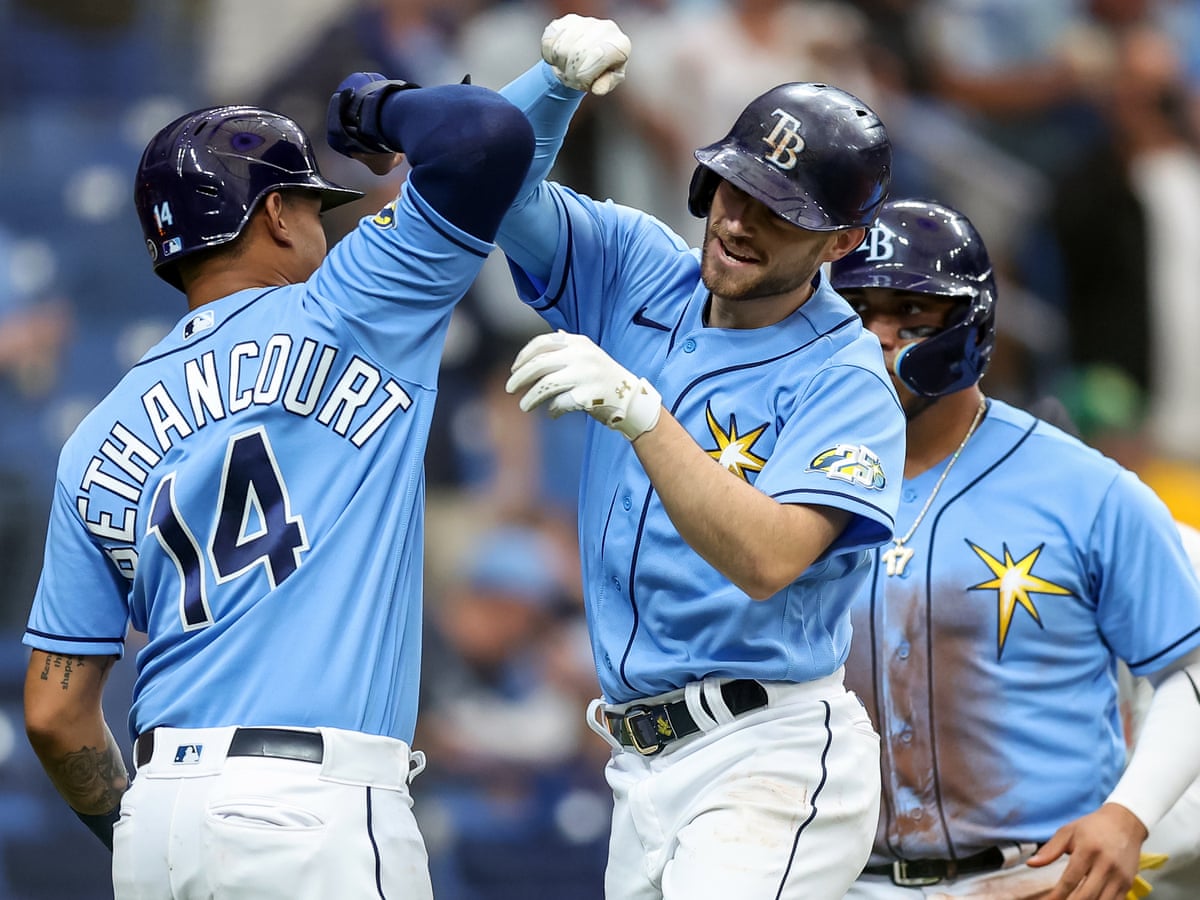Did you know that the Milwaukee Brewers, the smallest market MLB team of 2024, manages to contest giants with a market size of just 1,689,572 people? Contrast this against the backdrop of the New York Yankees’ extensive resources, and the disparity in Major League Baseball (MLB) becomes stark.
The playing field is uneven, to say the least, but the fight for success has never been solely about dollars and cents. The rankings of MLB smallest market teams in 2024 tell a tale of grit, ingenuity, and the pursuit of triumph against financial odds.
As we dive into MLB smallest market ranking 2024, it’s essential to note how teams like the Brewers, the Kansas City Royals, and the Cincinnati Reds adapt and strategize for competitive play despite apparent economic disadvantages. Let’s explore what makes these smallest market MLB teams of 2024 tick and how they equip themselves to face the goliaths of the game.
Key Takeaways
- The Milwaukee Brewers thrive as the smallest market team, illustrating that success is not solely defined by market size.
- Small market teams face unique financial hurdles in player retention and competing with large market franchises.
- Investments in analytics and adoption of technology play a vital role in leveling the field for smaller market teams.
- Community support and effective management are crucial factors in small market teams’ ongoing resilience.
- Despite the challenges, some small market MLB teams showcase the ability to contend and make it to the playoffs.
- Rankings highlight the disparities and ingenuity found in the smallest market teams, setting the stage for an engaging 2024 MLB season.
The Quest for Competitive Balance in MLB’s 2024 Small Market Landscape

Source: bleacherreport.com
The ever-present struggle for competitive balance within Major League Baseball (MLB) is most profoundly felt within its smallest markets. These small markets grapple with the realities of economic constraints that oftentimes lead to a resource-based disparity in talent acquisition and retention.
A critical analysis into MLB’s smallest market teams in 2024 uncovers an ongoing debate surrounding the league’s efforts to equalize the playing field—efforts like revenue sharing, which are designed to mitigate financial advantages enjoyed by teams in larger cities.
When evaluating the state of competitive balance in MLB, it becomes clear that the smallest market teams, those residing in less populous cities such as Milwaukee, face an uphill journey. Their difficulties are compounded by an inability to generate the same level of revenue through local broadcasting deals and ticket sales as their counterparts in cities like New York or Los Angeles. The distinction between these financial realms becomes a central theme in the smallest MLB market teams’ analysis as they continue to seek strategies that can level the dynamics of competition.
In the context of MLB smallest markets comparison 2024, we observe that these teams are not only challenged by the income disparities but also by the loyalty and size of their fan base. A smaller fan base can translate to fewer eyeballs on screens and less foot traffic through stadium turnstiles, directly impacting a team’s bottom line. These disparities lend to a cyclical dilemma in which small market teams are often forced to sell off their top players to wealthier franchises, thus perpetuating a competitive imbalance.
“The paradox lies in the heart of the game: baseball thrives on the uncertain outcome of competition, yet the economic structure inherently creates predictably imbalanced starting points for many teams.”
Consequently, MLB smallest markets comparison 2024 encompasses not only the size of the fanbase and city but also the ingenuity and adaptability each franchise must exhibit. The current landscape demands that small market teams outmaneuver rather than outspend their affluent rivals, fostering an environment where data analytics and innovative management techniques become key components of their strategic arsenals. Through these means, a semblance of competitive balance is sought amidst the asymmetric economic forces at play in MLB.
| Team | Market Size | Payroll | Franchise Value | Revenue Sharing |
|---|---|---|---|---|
| Milwaukee Brewers | 1,689,572 | $122.5M | $1.6B | Recipient |
| Kansas City Royals | 1,776,062 | $92.7M | $1.2B | Recipient |
| Cincinnati Reds | 1,979,202 | $92.4M | $1.19B | Recipient |
| Pittsburgh Pirates | 2,358,695 | $76M | $1.32B | Recipient |
| Tampa Bay Rays | 2,395,997 | $76.5M | $1.25B | Recipient |
The table above illustrates a snippet of the MLB 2024 small market cities’ competitive landscape, highlighting the disparities in franchises’ financials. It is evident that small market franchises receive revenue sharing in a bid to cultivate competitive balance.
However, the question of the effectiveness of these measures remains, as they continue to aspire towards the competitive zenith that MLB’s larger-market behemoths have more readily within their grasp.
The Milwaukee Brewers: Finding Success Against the Odds

Source: brewcrewball.com
Amid the landscape of Major League Baseball, where market size can arguably predetermine a team’s competitive fortunes, the Milwaukee Brewers, representing one of the smallest markets in the league, have continued to defy expectations.
With a tenacious spirit that echoes throughout their play, the Brewers consistently deliver playoff-worthy performances, underscoring their capacity to overcome inherent fiscal challenges through savvy management and the undying support of their community.
Market Size and Its Impact on the Brewers
The market size of the Milwaukee Brewers stands as the smallest within the MLB, with 1,689,572 residents behind the passionate wave of Brewers baseball. While this demographic metric could signal significant revenue shortfalls and challenges in player acquisitions, the Brewers organization strategically navigates these constraints to maintain a competitive edge on the diamond.
Overcoming Financial Hurdles with Loyal Fan Support
Brewers loyal fan support emerges not just as a point of pride but as a cornerstone of the franchise’s enduring success. In a city known more for its beer and brats than its vast population, the unwavering dedication of Brewers fans is both a powerful motivator and a substantive contributor to the organization’s financial backbone, supplementing revenue and injecting palpable energy into every game hosted at the American Family Field.
Revealing the Brewers’ Payroll and Franchise Value Metrics

Source: brewcrewball.com
Focusing on the pragmatic components of fiscal health and forward planning, the Brewers’ payroll and franchise value metrics evince a narrative of strategic cultivation. Despite resting at 20th out of 30 in terms of payroll with $122,572,551, and holding a franchise value of $1.6 billion—ranking 19th in the league—the Brewers underscore the efficacy of astute investment in player development and astute market choices, which, in concert, have allowed them to continue supplementing their roster with emerging talents and seasoned veterans alike.
The prowess of the Milwaukee Brewers, ensconced in the heart of a small market, reinforces their status on the MLB small market teams list as a beacon of savvy management and community synergy. It’s a testament to the dynamic that even amid financial limitations, a team can cultivate a culture of winning with the right blend of support, strategy, and ambition.
Kansas City Royals: A Small Market MLB Team’s Struggles
The plight of the Kansas City Royals is a tale told too often among the smallest market MLB teams of 2024. Endeavoring to remain competitive in Major League Baseball’s challenging economic landscape, the Royals exemplify the uphill battle faced by smaller markets.
With a market size just north of 1.7 million, Kansas City must tackle the onerous task of contending with franchises that benefit from larger fan bases, higher revenues, and the resources to acquire coveted players.
Since their pinnacle achievement of clinching the World Series title in 2015, the Kansas City Royals have encountered multiple seasons of tribulation, largely personifying the Kansas City Royals small market struggles.
The economic restraints have rendered them unable to secure the signatures of star-quality players or to retain their homegrown talent once they reach free agency—a stark reality for MLB small market teams list occupants.
| Team | Market Size | 2024 Payroll (Rank) | Franchise Value |
|---|---|---|---|
| Kansas City Royals | 1,776,062 | $92,727,347 (24th) | $1.2B (27th) |
| Comparable Small Market Team | Varies | Varies | Varies |
The figures tell a somber story, with the Royals’ payroll settling in the lower tiers of the league, further reinforcing the inherent disadvantage they possess against the titans of baseball. Despite their endeavors, Kansas City’s payroll at approximately $92.7 million places them 24th out of the 30 MLB teams, and their franchise value at $1.2 billion ranks them close to the bottom, at 27th.
In the MLB small market teams list, the Royals are far from solitary in their fiscal battles—many smallest market MLB teams 2024 face similar challenges. The key for teams like the Royals lies in intelligent drafting, astute development of young talent, and maximizing the value of every dollar spent, if they are to script a triumphant narrative of overcoming the odds stacked against them.
The Cincinnati Reds: Small Market, Big Dreams

Source: redreporter.com
Amid the hustle of Major League Baseball, the small market Cincinnati Reds forge their path with a combination of grit and strategic acumen. Standing as one of the smallest market MLB teams in 2024, they continue to shape a team capable of taking on the titans of the sport.
Cincinnati’s Market Size and Its Effect on Team Strategy
The Reds navigate the challenges of their market size with shrewd maneuvers and a focus on long-term player development. In the heart of Cincinnati, with a populace reaching just shy of 2 million, the Reds are astutely aware that every decision, every hire, has to count. The economic landscape dictates a measured approach to talent acquisition, compelling the front office to eschew splashy, short-term gains for sustainable growth.
Navigating the Competitive NL Central with Limited Resources
The NL Central houses a fiercely competitive array of teams, compelling the Reds to make the most of their resources. Employee morale and fan engagement peak when the Reds showcase their knack for maximizing value, even as the financial underpinning remains lean compared to their division rivals. Success, hence, isn’t just a product of wealth but the result of astute, lean operations that make every dollar stretch further on the field.
Prospect Development: The Key to the Reds’ Future Success
With an eye on the horizon, the Reds’ investment in prospect development is the linchpin to their dreams of greatness. The cultivation of young talents like Elly De La Cruz and Spencer Steer symbolizes the franchise’s commitment to propagate a pipeline of capable athletes ready to make their mark. This approach not only promises a bright future but also inspires the fanbase with the potential of homegrown stars leading the charge.
As the 2024 season progresses, the Reds continue to stand as a beacon for smallest market MLB teams, illustrating that with the right mix of fervor and tactical prowess, big dreams can take flight regardless of market size constraints.
The Resilience of the Pittsburgh Pirates Amidst Market Challenges

Source: bucsdugout.com
In an era where market size frequently dictates the fortunes of Major League Baseball franchises, the Pittsburgh Pirates market resilience has become a testament to their organizational fortitude. Standing up to the Pittsburgh Pirates small market challenges, the team remains an emblem of hope in MLB’s smallest market ranking for 2024. It takes a strategic mix of talent development and prudent financial planning to maintain competitiveness in the face of such constraints.
Despite financial hurdles suggested by their low payroll and franchise value, the Pirates leverage a robust farm system that ranks 8th in the league. This system serves as the bedrock for nurturing players like Oneil Cruz and Nick Gonzales, whose talents offer a glimpse into a future that could defy the gravitational pull of small market woes.
“Building a team that can compete in MLB doesn’t solely rest on the financial might but on the strategic vision of the franchise. The Pittsburgh Pirates’ ability to bring in and develop top-notch prospects is what gives life to our belief in overcoming market disadvantages.”
The team operates within a market size of 2,358,695, demonstrating that through sheer tenacity and smart management, it’s possible to be greater than the sum of your market’s parts. The Pirates exemplify a resilience that offers a beacon of hope to similar franchises navigating the financial intricacies of America’s favorite pastime.
- Low 2023 Payroll: $76,018,673 (28th of 30)
- Franchise Value: $1.32B (24th of 30)
- Market Size: 2,358,695
- 8th Ranked Farm System
- Prominent Prospects: Oneil Cruz, Nick Gonzales
While the cries for change in ownership echo in the stands due to a historical reluctance to chase after big-budget talent, the Pirates’ prospects for competitiveness remain buoyed by these promising players and their unwavering dedication to the city of Pittsburgh.
Tampa Bay Rays: Mastering the Art of Small Market Success

Source: muzejvojvodine.org.rs
The Tampa Bay Rays exemplify the capacity of small market teams to compete at the highest levels of Major League Baseball. Their data-driven strategy, keen scouting, and player development have forged a path to triumph, setting an example for small market success within the league.
Finding Hidden Gems: The Rays’ Approach to Team Building
Unlike teams that rely on lavish spending, the Tampa Bay Rays have flourished by identifying and nurturing undervalued players, turning them into key contributors. This calculated approach has uncovered numerous Rays hidden gems and bolstered their competitive edge.
Low Payroll, High Performance: An Analysis of the Rays’ Fiscal Strategy
Despite a modest payroll, the Rays’ low payroll performance is nothing short of impressive. They have adopted a philosophy of maximizing efficiency and productivity from every dollar spent, which has translated to remarkable on-field results and playoff appearances.
The Importance of a Strong Farm System for Tampa Bay’s Longevity
Tampa Bay’s strong farm system is a critical factor in their longevity and success. It serves as the foundation of their strategy, allowing them to compete sustainably by constantly refreshing their roster with high-caliber, cost-controlled talent.
The Smallest Market Teams in MLB in 2024 (Ranked)

Source: muzejvojvodine.org.rs
As the 2024 MLB season unfolds, the spotlight intensifies on the challenges and opportunities facing the smallest market teams. These teams are often in the shadows of their big-market counterparts, yet their struggles and triumphs shape the fabric of the league. Understanding the nuances of market size, along with the implications of financial limitations, is essential to appreciating the full picture of Major League Baseball’s competitive landscape.
Rounding Up the Teams: From Oakland to Colorado
Tied to their geographic and economic realities, teams like the Oakland Athletics, Cleveland Guardians, Baltimore Orioles, Arizona Diamondbacks, Minnesota Twins, and Colorado Rockies represent the smaller market sectors within MLB. Each of these teams operates under unique constraints that challenge them to be innovative both on and off the field. Their rankings, based on key metrics such as market size and financial resources, demonstrate the uphill battle they face in the pursuit of baseball excellence.
Market Inefficiencies and the Battle for MLB Relevance
Market inefficiencies in MLB reflect the economic disparities that exist between teams. For small market teams, these inefficiencies can impede their ability to compete, compelling them to find creative solutions to stay relevant. Crafting a competitive roster often involves deep dives into statistics, undervalued players, and shrewd financial management that transcends the norm of bigger spending equals greater success.
Analytics and Technology: Leveling the Playing Field for Small Markets
Advancements in MLB analytics and technology offer a glimmer of hope for these franchises. Data-driven decisions regarding player acquisition, development, and in-game strategies have become invaluable tools. The implementation of these technologies allows small market teams to minimize the gap with their richer rivals, giving them a fighting chance to compete in an increasingly sophisticated game.
| Team | Market Size | 2024 Payroll (USD) | Franchise Value (USD) | 2023 Win-Loss Record |
|---|---|---|---|---|
| Oakland Athletics | 2,800,000 | 48 Million | 1.1 Billion | 60-102 |
| Cleveland Guardians | 2,077,240 | 50 Million | 1.16 Billion | 92-70 |
| Baltimore Orioles | 2,800,000 | 45 Million | 1 Billion | 83-79 |
| Arizona Diamondbacks | 4,948,203 | 70 Million | 1.32 Billion | 74-88 |
| Minnesota Twins | 3,600,000 | 125 Million | 1.3 Billion | 78-84 |
| Colorado Rockies | 2,963,821 | 105 Million | 1.2 Billion | 68-94 |
Reviving the Underdog Spirit: Smaller MLB Markets on the Rise

Source: forbes.com
Smaller MLB markets are embracing the ethos of forging ahead despite the odds, invigorating teams with the underdog spirit once held by storied franchises. With an ever-changing competitive landscape, these smaller market teams engage in innovative approaches to draw talent, harness technology, and create strategies aimed at catalyzing their ascent in the standings.
At the forefront of this movement are the youngest MLB teams of 2024, fresh with players ready to carve out their legacies. Empowered by data analytics, advanced training methodologies, and a growing culture of inclusivity, these organizations are finding new ways to instill vitality and passion into America’s cherished pastime.
Tracking the success of smaller market teams offers inspirational narratives that resonate with fans and stakeholders alike. It demonstrates a tenacity and innovation on par with their better-financed counterparts. Here are some of the strategies utilized by these teams to keep the competitive flames burning:
- Investment in robust scouting networks, unearthing hidden gems from diverse talent pools.
- Adoption of advanced statistics and analytics to optimize player performance and team dynamics.
- Core focus on youth talent development to ensure a steady pipeline of skilled players.
- Community engagement and marketing tactics tailored to enhance local support and brand loyalty.
Perhaps nothing exemplifies the spirit of the underdog more than witnessing MLB small market successes. Teams such as the Oakland Athletics and Tampa Bay Rays have repeatedly defied expectations, proving that strategic thinking and community interaction can level the playing field.
| Team | Market Size | 2024 Payroll | Youthful Talent | Notable Achievements |
|---|---|---|---|---|
| Oakland Athletics | 2,798,000 | $89 million | Ranked top 5 in farm systems | Multiple AL West Titles |
| Tampa Bay Rays | 2,395,997 | $76 million | Cultivating young prospects | 2020 AL Champions |
| Kansas City Royals | 1,776,062 | $92 million | Investing in international talent | 2015 World Series Champions |
As these teams continue to champion the underdog narrative, they encourage a generation of fans and players to believe in the improbable and strive for greatness, regardless of market size. The burgeoning success stories of the smallest MLB markets capture the essence of the American dream, fueling the fire of competition and proving that in the game of baseball, every team has a fighting chance.
Small Market Teams and the CBA: The Struggle to Stay Competitive

Source: dodgersnation.com
The enactment of the MLB collective bargaining agreement (CBA) ushers in a renewed focus on the disparities between large and small market teams within the sport. For franchises operating in smaller markets, The CBA is a double-edged sword, promising adjustments that could lead to a fairer competitive landscape while also posing new financial obstacles for these teams. This complex interplay between economics and regulations has significant implications for the business of baseball and the fabric of America’s pastime.
Understanding the New Collective Bargaining Agreement’s Impact
The latest MLB collective bargaining agreement seeks to tackle long-standing issues surrounding competitive balance within the league. It aims to smooth out disparities by adjusting revenue sharing and introducing incentivizing schemes for performance. Small market teams are particularly affected by these changes as they can potentially enhance or hinder their ability to remain competitive on the baseball diamond.
Exploring Financial and Infrastructural Obstacles for Small Market Teams
Financial constraints are a persistent challenge for small market teams. With limited revenue streams relative to larger markets, investing in top-tier talent and infrastructure developments like stadium improvements and technological advances becomes significantly more challenging.
Revenue Sharing and Its Complex Role in Promoting Balance
Revenue sharing has been a cornerstone of MLB’s efforts to promote a more level playing field. By redistributing a portion of the league’s total income, it is designed to give lower-revenue teams additional resources to compete with financially robust franchises. However, this mechanism’s effectiveness in achieving its intended goal is subject to ongoing debate within the industry.
| Team | Revenue Sharing Received | Market Size | Payroll |
|---|---|---|---|
| Pittsburgh Pirates | Yes | 2,358,695 | $76,018,673 |
| Kansas City Royals | Yes | 1,776,062 | $92,727,347 |
| Other Small Market Teams | Varies | Diverse | Diverse |
The reality for teams like the Pittsburgh Pirates and Kansas City Royals is that financial challenges do not simply fade away due to revenue sharing. As depicted in the table above, even with assistance, small market teams possess dramatically lower payrolls than those at the top of the scale, necessitating efficient allocation of funds and clever management practices to stay competitive.
The Financial Dynamics Behind Small Market MLB Teams
The economic landscape of Major League Baseball (MLB) reveals that the financial dynamics of small market MLB teams are complex and challenging, necessitating savvy management and strategic ingenuity to attain competitiveness. Analysis of these teams often brings surprising insights, not least that success is not strictly metered by market size. The St. Louis Cardinals demonstrate this, having cultivated robust local revenue despite their smaller market demographic. Their strategy taps into a fervent fanbase and a consistent standard of performance that attracts support.
In contrast, the economic impact on small market MLB teams like the Miami Marlins, shows that a larger market does not guarantee higher local revenue. The Marlins’ struggle with low local revenue streams point to other influential factors at play including community investment in the team and its ability to engage and excite its audience. This dichotomy underscores the importance of diving deep into the smallest MLB market teams analysis to understand how some franchises outperform others against a backdrop of apparent economic disparity.
It’s evident from observing the intricate financial dynamics small market MLB teams navigate, that each organization carries the potential to script its own story of economic viability and success. Behind every small market team is a unique set of fiscal strategies, from the Cardinals’ community engagement to the San Francisco Giants leveraging their larger market for considerable revenue. These variations speak volumes about the MLB team financial dynamics, signaling that while market size can pose limitations, it can also present opportunities for those willing to innovate and adapt.
FAQ
What are the smallest market MLB teams in 2024?
The smallest market MLB teams in 2024 include the Milwaukee Brewers, Kansas City Royals, Cincinnati Reds, Pittsburgh Pirates, Tampa Bay Rays, Oakland Athletics, Cleveland Guardians, Baltimore Orioles, Arizona Diamondbacks, Minnesota Twins, and Colorado Rockies, all of which operate under smaller market constraints.
Why do market sizes matter for MLB teams?
Market sizes matter because they influence a team’s fanbase, revenue potential, and financial capabilities. Larger markets generally have more resources, which can translate into higher payrolls and better chances of attracting and retaining star talent, thus affecting competitive balance in the league.
How do the Milwaukee Brewers succeed despite being the smallest market?
The Milwaukee Brewers succeed through effective management, a devoted fanbase, and a focus on maximizing their payroll and team value. They’ve shown resilience by consistently making the playoffs and innovating within their financial constraints.
What challenges do small market teams like the Kansas City Royals face?

Source: muzejvojvodine.org.rs
Small market teams like the Kansas City Royals face the challenge of competing against teams with larger financial resources, often resulting in a difficulty to retain star players, attract free agents, and maintain a high level of performance on the field.
What strategies do smaller market teams like the Cincinnati Reds use to be competitive?
Teams like the Cincinnati Reds focus on resourceful talent evaluation, player development, and drafting and developing prospects. This allows them to build a solid team despite financial limitations and competition in a challenging division like the NL Central.
How do the Pittsburgh Pirates maintain hope for future competitiveness?
The Pittsburgh Pirates maintain optimism for the future by cultivating a robust farm system ranked 8th in the league, with prospects like Oneil Cruz and Nick Gonzales. This strategy focuses on youth development and potential long-term success, despite current financial restraints.
What distinctive strategies do the Tampa Bay Rays employ to achieve success?
The Tampa Bay Rays have achieved success through strategic acumen, focusing on identifying undervalued talent, optimizing roster performance, and maintaining a high-performing farm system, proving that innovative methods can lead to success even in small markets.
How has analytics and technology impacted small market MLB teams?
Analytics and technology have allowed small market MLB teams to enhance their competitive edge, making more informed decisions about talent evaluation and player development. This partially levels the playing field by enabling teams to identify and capitalize on inefficiencies better.
What role does revenue sharing play in MLB’s competitive balance?
Revenue sharing is an attempt by MLB to address disparities among teams’ financial resources by redistributing revenue from higher-earning teams to lower-earning teams, aiming to provide those teams with more opportunity to compete despite monetary differences. However, the effectiveness and impact of revenue sharing continue to be debated.
How are the financial dynamics of small market teams affecting their operations and success?
The financial dynamics of small market MLB teams deeply affect their operations and potential for success, influencing their ability to maintain and sign top talent, manage payroll, and invest in long-term player development. Teams must be especially efficient and innovative with their resources to stay competitive.

